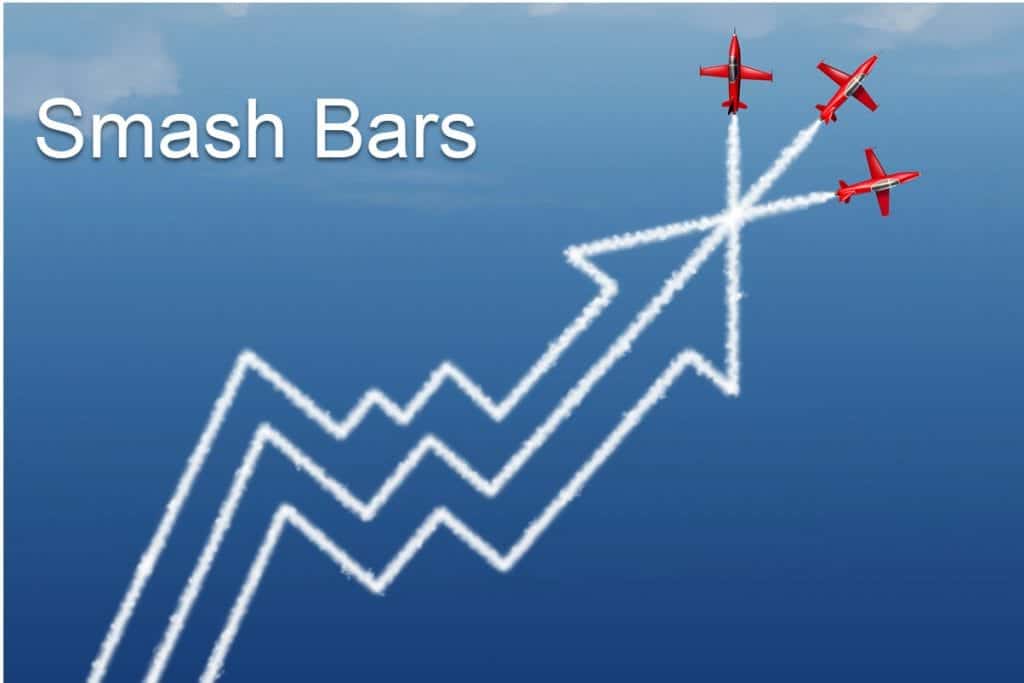
Pattern Recognition for Technical Analysis: Smash Bars
In today’s pattern recognition article the trading pattern is for scalpers. A scalper is someone who wants to get into the market, take a quick profit and move on. We are looking for quick moves of three to four days for profitable trades and losses of one day in duration.
Pattern: Smash Bars
Smash bars are based on the dynamics of a single bar. The pattern is easily programmed into most charting software packages (eg RealTest) and can then be backtested (with quality data such as Norgate Premium Data) to test its performance.
I’ve done extensive work on this methodology and found it has a high strike or success rate, but the average dollar win was not high. The average dollar win was also very close to the average dollar loss. Be wary of this especially if you’re paying high brokerage rates.
I recommend that you trade this method on a portfolio basis. That is, track multiple markets at one time and place multiple non-correlated trades (non-correlated trades or markets refer to positions or markets that do not exhibit the same price action at any given time). I found that although many signals were generated, not many were actually activated. Certain markets perform well for a period of time then move out of fashion. By having several markets in the portfolio, when one is performing mediocre, others may be performing well so the risk is essentially decreased.
The Setup
We are watching the psychology of the market in this setup; specifically when participants assume a certain close will cause a particular price action the following morning. If the desired result backfires, the quick momentum in the opposite direction occurs which is where this method profits.
- We are watching where the market closes in relation to the trend.
- In a downtrend we need a close near the highs, in fact in the highest quartile of the day.
- In an uptrend, we need a close near the lows or in the lowest quartile of the day.
Because the close is at the extreme of the day, the high or low, most participants automatically believe that the market will trade in that direction the next day. This does occur the majority of the time but when it doesn’t the market can reverse quite sharply. We want to be a part of the reversal and trading in the direction of the trend.
Smash bar in downtrend:
Smash bar in uptrend:
The Entry
The entry is activated when the Smash Bar is broken the next day in the direction of the trend.
Therefore, in an uptrend the high of the Smash Bar must be breached by 1 cent. By leaving a stop entry at this level we will be automatically stopped long into the trade. Remember that the Smash day has closed at the opposite end of the range on its lows, so activation won’t actually occur a great deal of the time.
In a downtrend the rules are simply reversed. The low of the Smash bar must be breached to activate the short position. Leave a stop entry 1 cent below the low of the Smash bar for the next day.
More information on Smash Bars and how to trade them is available in Building a Profitable Trading Plan Using Technical Analysis course provided to members of The Chartist within the Education section.
In our next article we’ll look at Swing Target Trading.


